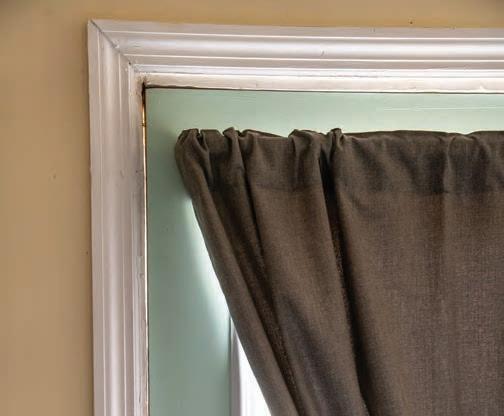
14 minute read
Energy Sense
from 2022-02-FEB
Budget-Friendly Energy Savings
By Miranda Boutelle
We all want to afford being comfortable in our homes — decreasing monthly bills and being more efficient at home is something we all should practice. Here are some budget-friendly energy efficiency tips targeting one of the biggest energy users in the home: the heating system. Heating and cooling account for nearly half of a U.S. home’s energy consumption.
Add coziness to your home One way you can feel warmer in your home without turning up the thermostat is by making your home cozy. The way our bodies perceive the temperature of a room is based more on the surfaces in the room than the air temperature. In general, harder surfaces feel colder. For example, your tile floor will feel cooler than your fabric sofa.
Cold floors in a room make us feel colder. Adding an area rug to a hard-surface floor can make us feel warmer, even with the same setting on the thermostat.
The same goes for windows. Windows are typically the least-insulated surface in a room and can feel cold in winter months. Adding or closing curtains can help the room feel warmer.
Check your windows Make sure your windows are closed and locked. Locking windows pulls the sashes tighter together, reducing gaps that allow air to flow through and cause drafts. If your sash locks don’t form a tight fit, adjust them or add weatherstripping.
There’s a variety of window weatherstripping products available for less than $20. Most are simple to install and only require tools you most likely already have around the house, such as scissors and a tape measure.
Some are more permanent solutions, and some are intended to be used for one heating season and then removed. Temporary solutions such as caulk strips, putty, pull-and-peel caulking or window insulation films can be used if you rent your home and can’t make permanent changes.
Seal your doors Weatherstripping doors is an easy do-it-yourself project. Make sure your doors seal tightly and don’t allow drafts to pass through around the edges or under the door.
Make sure any doors leading to an unheated space — outside or into a garage — are sealed tightly. If you can see light around the edges or underneath the door, or feel air movement when the door is closed, you know you are losing energy.
Because doors need to open and close easily, expect to do a bit of adjusting after installing weatherstripping. If weatherstripping isn’t installed correctly, it can make the door hard to close. Making it too loose defeats the purpose (you need to get it just right).
Close the damper If you have a fireplace, make sure the damper is completely closed when not using it. Leaving the damper open is like leaving a window open, it’s just harder to see. The air you just paid to heat your home will go right out the chimney.
The only exception is some gas fireplaces need to remain open for gas fumes to exit the home. If you have a gas fireplace, check the owner’s manual for more information on the damper position.
Layer up Dressing for the season prevents going overboard on your energy use. It can be tempting to adjust the thermostat to increase your comfort. Putting on a sweater or comfy sweatshirt can have the same comfort impact without increasing your energy use. Slippers can be a big help too, especially when your feet touch a cold floor.
The next time you consider turning up the thermostat a few degrees, try some of these tips first to stay warm and leave increased energy bills out in the cold.
Mark Gilliland
Make sure your windows are closed and locked to reduce gaps that allow air to flow through and cause drafts.

Mark Gilliland
If you can see light around the edges or underneath the door, you are losing energy. Adding weatherstripping is an easy, inexpensive do-it-yourself project.
This column was written by Miranda Boutelle of the Efficiency Services Group. Visit carolinacountry.com/your-energy for more ideas on energy efficiency.
Give your house a tune-up. Energy efficiency projects, big and small, all online.
Expert advice on
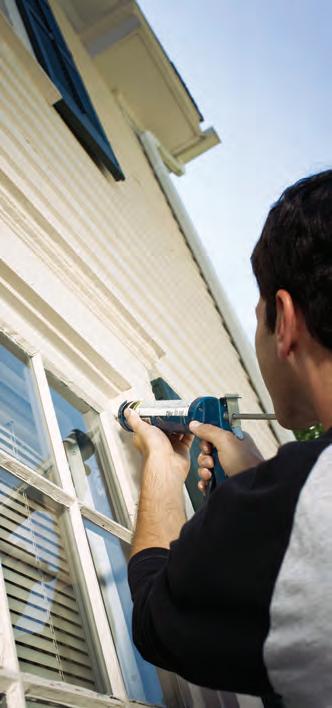
PROTECTING YOUR ENDLESS ADVENTURES Savings for a Limited Time



Experience limited time savings on RV and other storage and hobby buildings, now through February during Building Value Days!
To learn more or to get started today, visit mortonbuildings.com.
800-447-7436 | MORTONBUILDINGS.COM
©2022 Morton Buildings, Inc. Certain restrictions apply. A listing of GC licenses available at mortonbuildings.com/licenses.
CALL FOR SUBMISSIONS
Vacations Gone Wrong
Lessons learned from less-than-relaxing getaways
Maybe it was when you took a right instead of a left, sending your road trip down an unexpected (and unwanted) path. Or maybe that hotel you booked didn’t quite match up to the brochure. If you have tales of woe from vacations gone wrong, you’re not alone — we’ve all been there — and we’d love the opportunity to share them with readers. We’ll pay $50 for each photo or story published in our April 2022 issue.
Rules
Deadline: February 15, 2022 One entry per household Digital photos should be a minimum of 1200 by 1800 pixels; prints a minimum of 4 x 6 inches. Include your name, electric co-op, mailing address and email address or phone number with your entry. Text should not exceed 200 words. We retain reprint and online rights. Payment will be limited to those entries appearing in print, not entries featured solely on carolinacountry.com. Send to
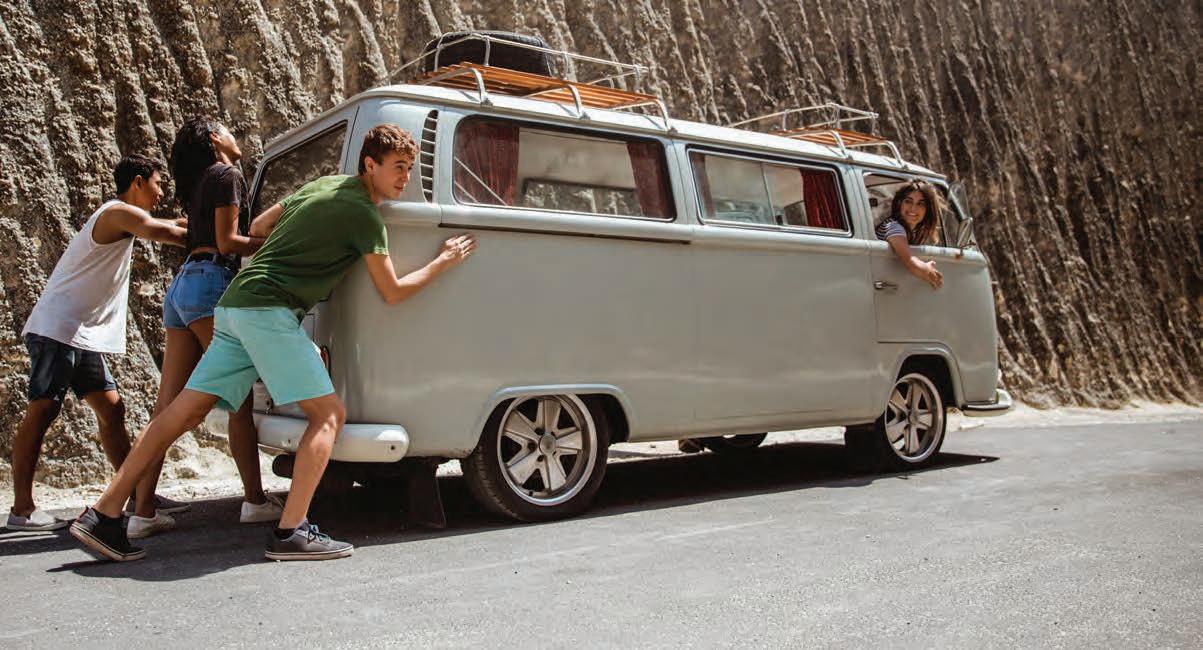
Online: carolinacountry.com/vacationfails No emails, please. Mail: Carolina Country —Vacation Fails 3400 Sumner Blvd. Raleigh, NC 27616 If you would like us to return your photo print, include a self-addressed, stamped envelope. (We will not return others.)
THANK YOU!

To those who support the North Carolina Jaycee Burn Center
North Carolina’s electric cooperatives hosted their 22nd annual golf tournament and fundraiser in September 2021, raising more than $148,000 for the North Carolina Jaycee Burn Center at UNC Hospitals. Electric cooperatives, in partnership with more than 80 organizations and individuals, have donated more than $2.4 million to the Burn Center over the years.
Beyond providing the very best in compassionate care, the Burn Center’s mission extends to advancing burn prevention education and outreach, innovative treatment, research, rehabilitation and life-long aftercare. Its success has led to the Burn Center’s recognition as one of the best comprehensive burn centers in the world.
North Carolina’s electric cooperatives are grateful to all of the organizations and individuals who contributed to the success of this fundraiser and the Burn Center. With the help of generous donors like these, the Burn Center can continue its groundbreaking work in helping burn patients become burn survivors. Diamond Sponsors ($12,500 and up) CoBank | Lee Electrical Construction, LLC North Carolina’s Electric Cooperatives Pike Electric, LLC
Platinum Sponsors ($10,000–$12,500) Duke Energy Gold Sponsors ($5,000–$7,499) Fallen Lineman Association | Four County EMC Meridian Cooperative | NRUCFC | River City Construction Inc South River EMC | Southern Power Silver Sponsors ($2,000–$4,999)
ACES | Albemarle EMC | Blue Ridge Energy | Booth & Associates, LLC Brunswick EMC | Carolina Dielectric Maintenance & Testing Co. Central EMC | Electrical Consulting Engineer | EnergyUnited | ERMCO Inc. French Broad EMC | Fujitsu Network Communications | Haywood EMC Jones-Onslow EMC | NTS | Piedmont Electric Helping Hands PowerSecure | Randolph EMC | Roanoke Electric Cooperative Sandhills Utility Services, LLC | Sumter Utilities, Inc. | Surry-Yadkin EMC TEMC | Tri -ounty EMC | Union Power Cooperative | Wake Electric Williams Electric Co. Bronze Sponsors ($1,000–$1,999)
Advanced Energy | Altec Industries | Asplundh Tree Expert, LLC Bellwether Management Solutions | C-Phase Services Cape Hatteras Electric Cooperative | Carteret-Craven Electric Cooperative Chapman Company | Chatham Electric Service LLC | CT Consultants, Inc. Edgecombe-Martin County EMC | ELECT, P.C. | Enervision Inc Federated Rural Electric | Halifax EMC | Hubbell Utility Solutions | Lekson Associates Lewis Tree Service | Lumbee River EMC | Milsoft Utility Solutions | NISC Osmose Utilities Services, Inc. | Pee Dee Electirc | Pitt and Greene EMC | Powertech Rutherford EMC | SE Power Services | Stella Jones | Substation Engineering & Design Utility Partners of America | W.R. Daniel & Associates, Inc. | Xylem Tree Experts Individual Sponsors & Donations ($50–$999)
AEP Energy Partners | Atlantic Power Sales | Chuck Terrill | Ensales LLC Koppers Utility Services | Lewis Advertising | McCall-Thomas Engineering | Morgan Stanley RGrid Power | The Okonite Company | Triangle Senior Golf Tour Utility Electrical Consultants, PC


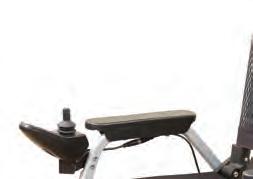
Finally . . . a better mobility solution than Scooters or Power Chairs.
The Zoomer’s versatile design and 1-touch joystick operation brings mobility and independence to those who need it most.
If you have mobility issues, or know someone who does, then you’ve experienced the difficulties faced by millions of Americans. Simple tasks like getting from the bedroom to the kitchen can become a time-consuming and potentially dangerous ordeal. You may have tried to solve the problem with a power chair or a scooter but neither is ideal. Power chairs are bulky and look like a medical device. Scooters are either unstable or hard to maneuver. Now, there’s a better alternative . . . the Zoomer.
My Zoomer is a delight to ride! It has increased my mobility in my apartment, my opportunities to enjoy the-out-of-doors, and enabled me to visit the homes of my children for longer periods of time. The various speeds of it match my need for safety, it is easy to turn, and I am most pleased with the freedom of movement it gives me. Sincerely, A. Macon, Williamsburg, VA After just one trip around your home in the Zoomer, you’ll marvel at how easy it is to navigate. It is designed to maneuver in tight spaces like doorways, between furniture, and around corners. It can go over thresholds and works great on any kind of floor or carpet. It’s not bulky or cumbersome, so it can roll
Joystick Control
(adaptable left or right)
Sturdy & Lightweight Frame
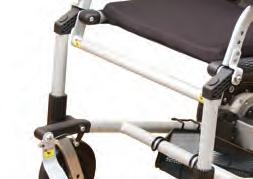
Comfortable Seating
Swivel Away Footrest Powerful Battery/ Dual Motors
right up to a table or desk – there’s no need to transfer to a chair. Its sturdy yet lightweight aluminum frame makes it durable and comfortable. Its dual motors power it at up to 3.7 miles per hour and its automatic electromagnetic brakes stop on a dime. The rechargeable battery powers it for up to 8 miles on a single charge. Plus, its exclusive foldable design enables you to transport it easily and even store it in a closet or under a bed when it’s not in use. Why spend another day letting mobility issues hamper your lifestyle? Call now and find out how you can have your very own Zoomer.
12”
Folds to 12” in seconds
Zoomer conveniently rolls beneath table or desk
Easy to use joystick control
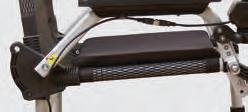
Now
available with sporty two-arm lever steering
(Zinger Chair)
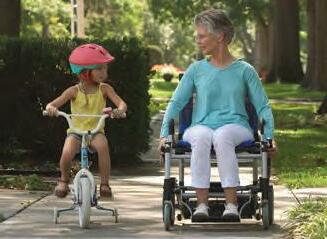
Ready to get your own Zoomer? We’d love to talk to you.
Call now toll free and order one today! 1-888-690-0268
Please mention code 116359 when ordering.
Oldest Operating USO Delivers
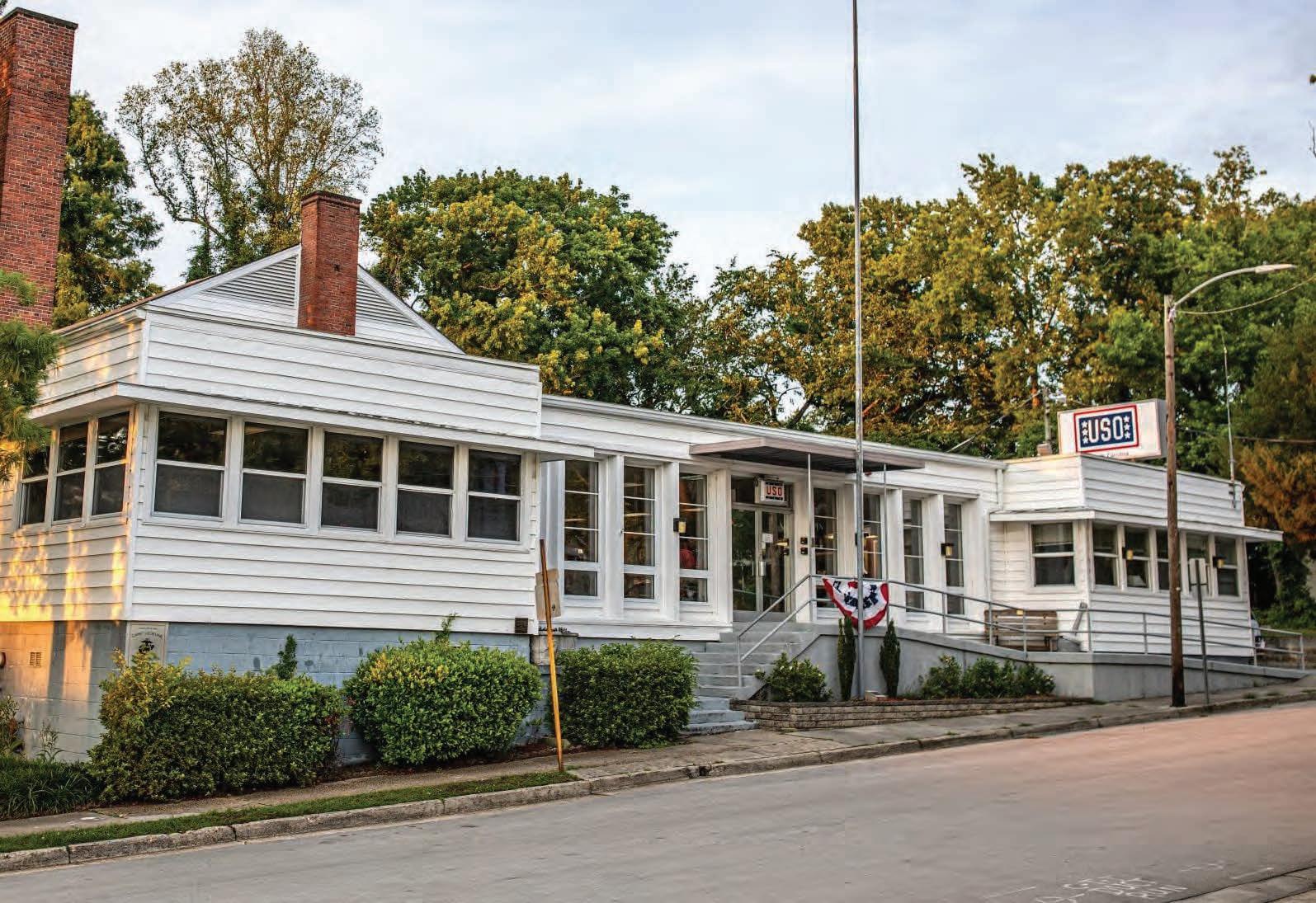
Jacksonville USO has been ‘always by their side’ for nearly 80 years
By Pamela A. Keene
Although the original building is currently closed, volunteers at the USO Jacksonville Center have been making a difference since 1942.
Megan Boggs knows the benefits of being a military spouse, which became all the more apparent when traveling alone with a 3-week-old infant. In 2013, on her way to introduce her son to her parents in Pensacola, her flight from Seattle was delayed.

“As a first-time mom, I knew I could easily navigate my traveling alone with a newborn,” says Megan. “Boy, was I wrong. If it hadn’t been for the USO in Seattle, I don’t know what I would have done.”
As she juggled her baby, extra luggage, a baby carrier and tried to navigate the flight changes, an airline official asked her if she was military. “I replied that my husband was, and the airline employee pointed me in the direction of the USO, knowing I needed their help. They took me in, comforted me and made everything okay.”
After she and her husband, U.S. Marine Capt. Gary Boggs, were transferred to the Marine Corps Air Station New River in Eastern North Carolina in 2019, she saw an advertisement for a facilities administrator at Jacksonville’s USO facility. It carries the designation as being the oldest continuously operating USO in the world.
“I was so excited when I was hired in early 2020,” Megan says, who has since been promoted to supervisor. “I started work the week of the COVID shutdown, so it’s been interesting to say the least. The best part is that we are able to continue our mission of the USO to support our troops and their families, provide them comfort and a sense of family away from home. Our slogan is ‘Always by Their Side.’”

USO Outdoor Adventure Team deep sea fishing off Cape Hatteras



Legacy of service The USO was founded in 1941 when President Franklin D. Roosevelt brought together more than a halfdozen service organizations to help the morale of the military and support those on the home front. Under the name United Service Organization, today it operates more than 250 centers around the world, including sites in communities, airports and military bases.
The USO supports service members stationed abroad, training or accomplishing missions in remote parts of the globe. It also connects with families of service members who are back home. The USO mission is to connect service members to family, home and country throughout their service to the nation.
It’s a congressionally chartered private entity — not part of the federal government — that receives its funding from individuals, organizations and corporations.
With six centers statewide, USO NC serves an average of 567,000 troops over the course of a year. All locations rely heavily on volunteers, some who are connected with the military and others, who as civilians, want to contribute.
“We couldn’t do all we do without our amazing volunteers,” Megan says, who, with Hailey Day, center operations and program coordinator, are the only paid employees at the Jacksonville USO. “They are always here for our service members and their families, no matter what the mission entails.”
Ongoing support Aside from the challenges of the pandemic, Megan has been pressed into service on another front. The 79-year-old building that has housed the USO since 1942 was closed several months ago because of concerns about the structure of the foundation.
“Even without a physical building, we are able to carry out our mission and programs,” she says. “We’ve been working with base officials to move into a new facility, but in the meantime we are continuing our work. Our mission is in the heart of the service members and their families, and we will always do what is necessary to carry on regardless of location.”
A major part of the USO work surrounds providing resources for service members and military families in all stages of their service. Programs assist families moving into new communities, from helping families connect with schools to bridging relationships with other military families. The organization’s work also provides support for moves from a military career into the civilian realm, and provides care for unaccompanied soldiers to let them know they’re not overlooked — even down to offering snack and personal-care packets during transitions.
“It sounds like a little thing, but for that solider who has no family nearby, having a pack of snacks on their racks when they return home or are quarantined due to COVID-19 can mean a great deal,” she says.
The Jacksonville USO typically serves more than 4,000 personnel each month.
“Particularly as a military spouse, I’m honored to wear the USO logo,” Megan says. “I remember that feeling of being alone in Seattle with a newborn and how the caring people with the USO helped me that day. I am so grateful to be able to help others and give back, especially for our service members and their families who are making such sacrifices to serve our country.”
USO NC USO NC
Pictured is Marine Cpl. Kenneth Coty who, in 1963, found time to participate as a volunteer at Camp Lejeune, NC
Pamela A. Keene is a freelance journalist who writes for magazines and newspapers across the Southeast and nationally.





